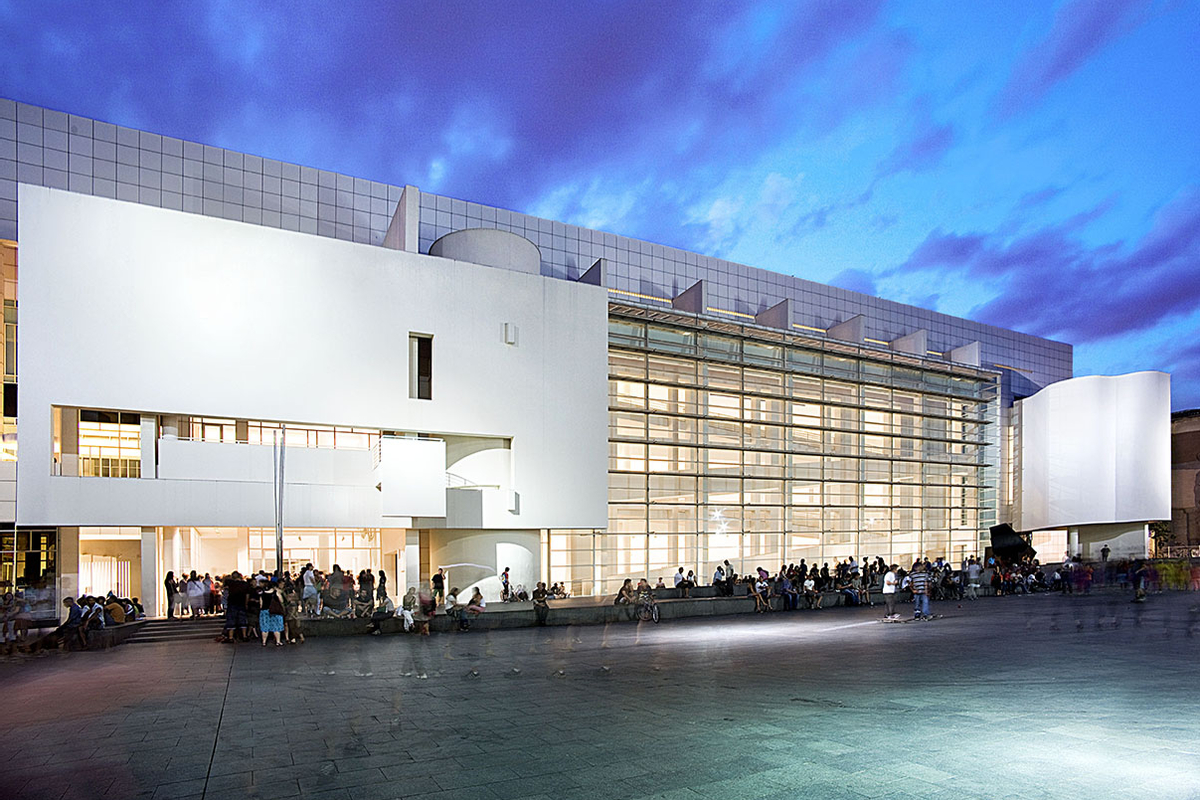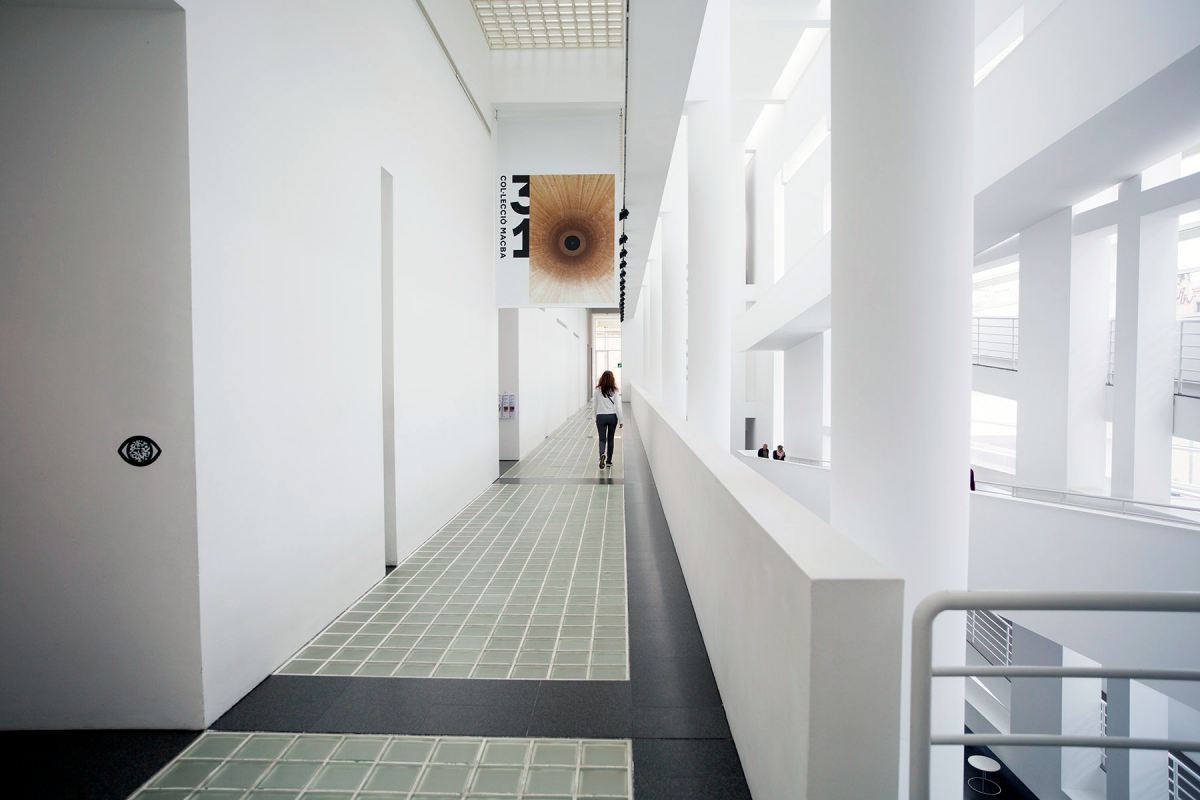The MACBA expansion: extending the Richard Meier building

The expansion of the museum is an opportunity to advance a step further, to convert intermittent visitors into regulars, and to reformulate the museum's social role within the cultural milieu.
Over the years, MACBA has become an icon of the city and a representative of contemporary visual culture in Barcelona. A generation of artists has grown up around the museum who have given their unconditional support to the institution and, by means of their own multifaceted language, have reached many different layers of society.
Beyond generating an outstanding collection of art and laying the foundations for a productive community of creators, the museum's main virtue has always been its familiar, even intimate, artistic program. MACBA can boast its own identity: a constantly evolving critical approach that has given visibility to the story of an entire era.
25 years after opening, and in keeping with its mission to build a legacy of contemporary art for the city, the MACBA permanent collection now includes more than 6,000 works that cannot be exhibited due to the limitations of the current space. For this reason, a new extension measuring over 2,800 square meters is due to be built, allowing the collection to be exhibited permanently.
The extension of the building designed by Richard Meier is now at a key stage. This future transformation opens up significant new opportunities for attracting new visitors, converting occasional visitors into regulars, and strengthening Barcelona's cultural positioning at the international level.
The museum as one of the city's key points of interest
Barcelona, faithful to its avant-garde traditions, has always been receptive and open to change. From the genesis of the current museum at the end of 1959, when art critic Alexandre Cirici first argued that there was a need to create a museum of contemporary art, until today, there has been a firm commitment to research, knowledge, and artistic reflection. MACBA's collection focuses on art produced since the middle of the last century and is based on a critical perspective that takes into account both the historical reality of each era and its local context. In this sense, it proves that the infrastructures of large cities largely determine their identity and capacity for transformation.
It is vital for a museum to be able to house and disseminate as much knowledge as possible and to be able to redefine its role from time to time. The project will make it possible to adapt the existing space, in as organic a way as possible, to the new challenges posed by the cultural scene today. The idea is to enable the museum, and the city, to remain highly competitive on an international level; it will help Barcelona to become one of the great cities of the future, a plural city whose visual art is better represented and connected to citizens. With the future extension of the Meier building, Barcelona's role in the fight for the top positions in the international circuit of major museums is assured.

The five firms competing to build the extension
The MACBA has recently released the names of the five architecture firms that are competing to design the long-awaited museum extension. The jury, composed of the members of the Consortium—the Barcelona City Council, the Generalitat de Catalunya, the Ministry of Culture, the MACBA Foundation, representatives of the museum, and members of the Col-legi d'Arquitectes de Catalunya—has reached a consensus and has unanimously approved the candidates, who will present their proposals next March.
Selected from among more than thirty applicants, the candidates have a clear international focus and demonstrate a commitment to combine young and emerging talent with the experience and prestige of renowned firms. Those selected are:
- Estudio Barozzi Veiga, based in Barcelona, responsible for the design of the Musée Cantonal des Beaux-Arts in Lausanne and the Szczecin Philharmonic Hall in Poland.
- Camps Felip Arquitecturia and Tuñón Arquitectos, from Girona and Madrid; responsible for the Ascó Visitor Centre, the Royal Collections Museum in Madrid and the Castilla y León Contemporary Art Museum.
- Harquitectes and Christ & Gantebein, from Sabadell and Basel, responsible for the ICTA-ICP Research Center in Barcelona and the extension of the Swiss National Museum in Zurich.
- David Chipperfield Architects and b720 Arquitectura, from London and Barcelona, responsible for the West Bund Museum in Shanghai, the Reina Sofia Museum in Madrid, and the Elbtower in Hamburg.
- Caruso St. John Architects, from London and Zurich, responsible for the Newton Street Gallery and the remodeling of the Tate Britain, both in London.
More culture in the center of the city
The space chosen for the expansion of MACBA is the Convent dels Àngels. The idea is to reorganize, reinforce and consolidate the museum's displays and position its art collection as a permanent museum asset. In addition, there is a desire to root a solid and coherent narrative in local and international contemporary art in order to generate more engagement and increase the museum's visibility among the inhabitants of Barcelona.
The intention is to extend the museum facilities around the open public space located between the apse of the chapel of the Convent dels Àngels and the MACBA study and documentation center, while respecting the condition and architectural richness of the adjacent buildings and ensuring full integration into the Convent dels Àngels complex.
This will enable the MACBA to reaffirm its role as an agent of social transformation in the neighborhood, and, together with the CCCB, the UB, the URL, the Filmoteca, the Massana School, the Liceu and the Taller de Músics, add a further element to the internationally-recognized historic center of Barcelona.
If you want to know the latest news about Barcelona, its talent and its projects, subscribe to our newsletter.







